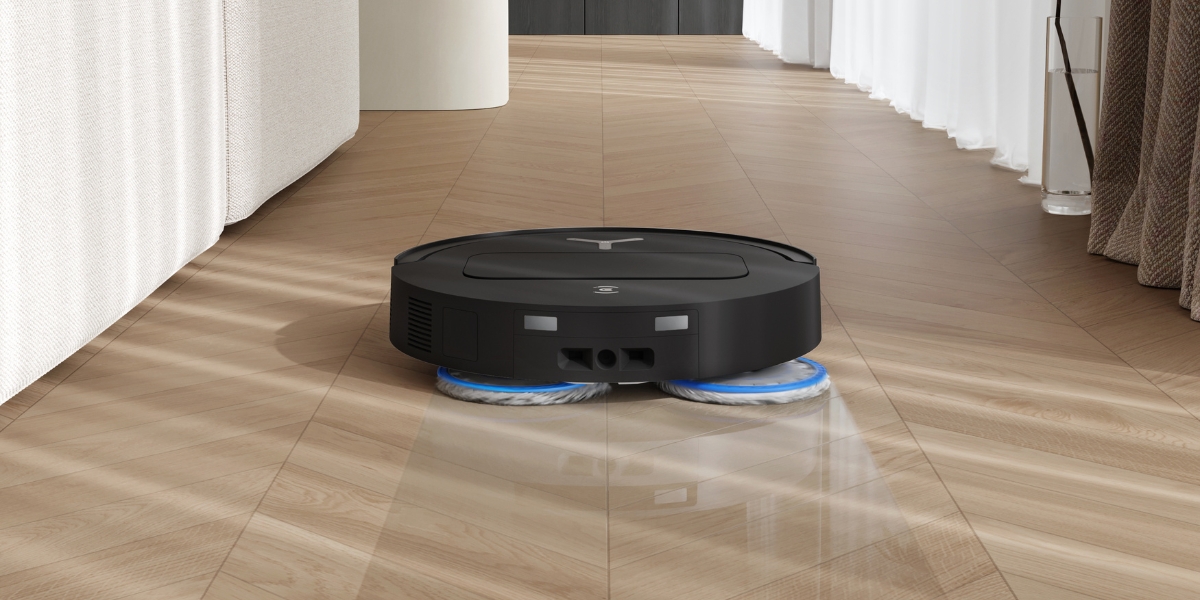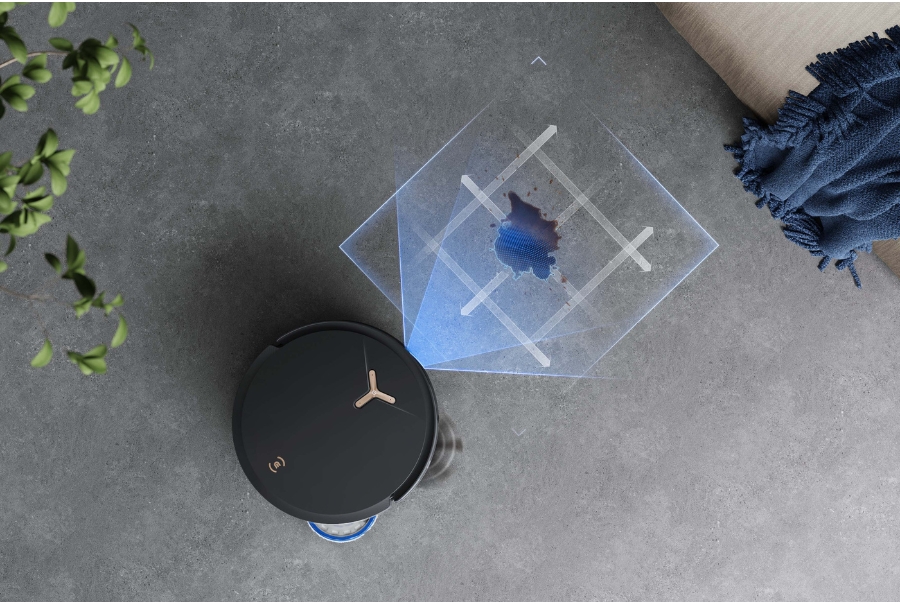How Often Should You Mop Your Floors?
2025-05-16

We all know that vacuuming and mopping are basic chores; yet, 35% of Australians admit to neglecting mopping in their regular cleaning schedule. The million-dollar question here is: how often should you mop your floor?
No one likes to spend hours mopping every day, but what’s the best way to maintain hygiene? While there’s no one-size-fits-all answer, as the frequency depends on your home’s traffic, lifestyle, and flooring, wiping them periodically keeps them sparkling and healthy.
How Often to Mop Your Floors?
Generally, it is recommended to mop floors at least once per week to avoid dirt build-up and keep them durable for years. That being said, the actual frequency should be adjusted based on traffic, lifestyle, and flooring.
-
High-traffic homes, such as those with kids or furry friends, may need swabbing as much as 2-3 times per week to remove pet dander and allergens.
-
Areas that are prone to spills, like kitchens and bathrooms, require extra wiping.
-
If you spend most of your time outside, you can manage with mopping biweekly.
Another way to determine how often you should mop your floors is to look for signs: sticky spots, dullness, or gritty dirt are great indicators that it’s time to clean. If there’s a renovation next door, you may need to mop a little more frequently as well.
Take the flooring material into consideration, too. Hardwood, laminate, and marble floors are prone to water damage, while tile and vinyl floors have better water resistance.
How Often Should You Mop Hardwood Floors?
Mop hardwood floors weekly at most to prevent moisture damage. Since wood is a natural material, its hygroscopic characteristic makes it expand and contract upon contact with moisture; hence, hardwood flooring can bulge or shrink with humidity.
As you can imagine, too much water or mopping too frequently can cause warping, mold, residue buildup, or discolouration. Scrubbing too often also risks dulling the finish.
To strike a balance between removing dirt and protecting the wood floor, vacuum first to remove debris, then spot-clean high-traffic areas, like entryways, from time to time with a damp microfibre mop and a wood-safe cleaner. In case of spills or paw prints, swab those spots immediately.
How Often Should You Mop Tile and Vinyl Floors?
Mop tile and vinyl floors 1–2 times per week, or more in busy spots like kitchens or bathrooms. Premium tiles undergo high-temperature firing during production, transforming clay into a non-porous, vitrified surface with a low water absorption rate.
On the other hand, vinyl planks or tiles are designed with a layered structure, including a waterproof base, a decorative print, and a durable topcoat, making them highly resistant to water for indoors.
Deep clean vinyl and tiles with a mild cleaner, instead of harsh chemicals that dull finishes, to maintain their shine and hygiene.
How Often Should You Mop Laminate Floors?
Mop laminate floors once every 1–2 weeks, depending on traffic and mess. With a wide range of colours and patterns, this affordable material can handle small spills but is risky with excess moisture.
The issue is that if the liquid is not cleared quickly enough, it can penetrate through the seams to the core layer, which is made from compressed wood fibres extracted from wood chips, and potentially lead to warping, cupping or swelling.
Hence, avoid soaked mops when you clean laminate floors. Instead, use a damp microfibre mop with a laminate-safe cleaning solution to minimise residue.
How Often Should Pet Owners Mop Their Home?
To control hair, dander and paw prints, pet owners are advised to mop 2–3 times a week. Whether you own a dog, cat, or other furry animals, pets tend to create messes in feeding areas, entryways and living rooms. Pet dander also easily trigger allergic reactions.
As a result, vacuuming alone is not the best solution; you need to mop regularly with pet-safe cleaners to get rid of pet hair, fine dust and allergens.
So, how often should you mop your floors with pets? A minimum of two times per week is typically advised, and you can increase the frequency if you have more than one furry friend or during shedding seasons.
Why is Regular Mopping Important?

Regularly mopping is vital to home cleaning as it effectively removes fine dirt and allergens that vacuums miss, maintaining hygiene, improving air quality and extending the floor’s lifespan. If you live with kids or senior citizens, washing the floor helps prevent slipping accidents and minimise the growth of bacteria and germs.
Popular flooring like hardwood, tile, or laminate can become dull over time due to grime buildup; consistent cleaning helps maintain its shiny appearance and reduces wear, ultimately saving on repair costs in the long run.
For pet owners or allergy sufferers, frequent wiping is necessary to cut down on dander and pollen, creating a cleaner, fresher living environment.
How to Mop Your Floors Efficiently?
To mop floors efficiently, declutter first to prepare, then pick the right mop and work in sections. During the process, wring out excess water and refresh the dirty water from time to time. For a smarter solution, consider getting a robot vacuum and mop to take over the manual task.
Use the Right Mop for Your Floor Type
Select a microfibre mop for flooring that is sensitive to moisture, like hardwood and laminate floors, as its soft texture helps avoid scratches. A sponge mop also works wonders on these delicate surfaces, with its absorbent sponge heads gently soaking up spills.
Meanwhile, spin and string mops are great options for tiles, especially in large areas. A steam mop is popular for sanitising kitchen or bathroom floors using hot steam; however, it’s not suitable for hardwood and vinyl floors.
Declutter Before Mopping
Clear toys, charging cords and sharp objects from the floor before mopping. Scrubbing a cluttered floor not only risks spreading the mess, but it also risks jamming the machine. Decluttering makes wiping smoother without obstruction on the path.
Mop in Sections
Work smarter, not harder: swab in small sections to avoid streaks and remind yourself to wring out dirty water.
-
In small apartments, you can start at the farthest corner and mop toward the entrance to “exit” more easily.
-
If you live in a large house with multiple floors, start on the top floor and work your way down.
Focus on the bathroom and kitchen first, as they are usually the toughest spots.
Wring Out Excess Water to Avoid Puddles
Most flooring has a certain level of water resistance but isn’t 100% waterproof. That’s why you should wring your mop tightly to prevent splashing around too much water, which could cause damage. If it takes more than three passes to soak up the water you’ve spread, that’s a sign that you are applying too much water.
Change Dirty Mop Water Regularly
Swap out dirty mop water every so often to avoid spreading grime and germs. Mopping picks up dirt and debris, which you rinse in the bucket. When the water looks visibly dirty, continuing to use it reintroduces dirt to the floors, wasting your time and effort. Thus, replace it with fresh water at regular intervals for hygiene reasons.
Select a Robot Vacuum and Mop
A robot vacuum and mop like DEEBOTs uses advanced features to mop efficiently without your intervention. With OZMO ROLLER Instant Self-Washing Mopping Technology, this model provides a more powerful mop with 200RPM to effectively scrub and remove stains adhered to the floor; meanwhile, an array of 16 clean water nozzles delivers fresh water back to the mop to keep it fresh after the wastewater is scraped off, prevent cross-contamination. Together with smart mapping and obstacle avoidance, it automatically mops your home with adjustable settings and returns to the docking station for self-emptying and cleaning.
You can either preset a schedule for routine cleaning, or send it to wipe away specific spills, simply via the app or voice commands.
FAQ
What Happens If You Don’t Mop Your Floors?
Skipping mopping lets dirt, allergens, and grime build up, dulling floors and risking damage. Cleaning regularly prevents bacteria growth and maintains hygiene, especially in pet homes.
Should I Vacuum Before I Mop?
Yes, vacuuming first before mopping helps remove loose debris. Wiping without vacuuming spreads grit, scratching floors. Clean consistently for best results.
How Often Should You Mop Kitchen Floor?
Mop kitchen floors 2–3 times weekly, or from time to time for spills. Kitchens face grease and crumbs, so scrubbing regularly keeps them spotless and safe.
Related Products









